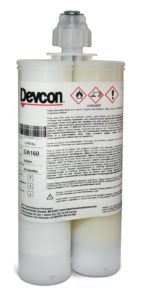Hard epoxy material
- Thread starter Tengu
- Start date
-
Come along to the amazing Summer Moot (21st July - 2nd August), a festival of bushcrafting and camping in a beautiful woodland PLEASE CLICK HERE for more information.
You are using an out of date browser. It may not display this or other websites correctly.
You should upgrade or use an alternative browser.
You should upgrade or use an alternative browser.
Beware of heat cured materials.
PVC is quoted as having a glass transition temperature of between 60 - 82degC, while that Fimo clay is cured at 110degC. I had to repeatedly remind people I worked with that the PLA (glass transition temp 60degC) was not suitable for prototype tooling that would see 110C process temperatures. Finally having to prove the point practically...we were left with a solid puddle of what was once PLA tooling that looked like what happens to cheddar cheese under the grill!
Another thing is that many "hard" epoxies are also rather brittle, something which PVC is certainly not!
Finally, it matters not how strong or hard the repair material is if it does not form an equally strong bond with the PVC. I could not count the number of plastic repairs I have tried, or seen, where they failed at the interface with the base material. PVC and ABS are easier to glue than many other plastics, but still needs to be considered.
I think that my personal choice might be this stuff: Devcon Plastic Welder.

 itwperformancepolymers.com
itwperformancepolymers.com
It is available in the UK, Axminster has it, as does Sussex Model and Amazon. It has a very similar hardness to PVC (compare them on the Shore D scale).
Long ago, someone kicked my Honda's wing mirror off, broke the bracket. I used that Devcon to reattach and it held for a couple years, until I decided to spend the £90 and fit a new mirror.
PVC is quoted as having a glass transition temperature of between 60 - 82degC, while that Fimo clay is cured at 110degC. I had to repeatedly remind people I worked with that the PLA (glass transition temp 60degC) was not suitable for prototype tooling that would see 110C process temperatures. Finally having to prove the point practically...we were left with a solid puddle of what was once PLA tooling that looked like what happens to cheddar cheese under the grill!
Another thing is that many "hard" epoxies are also rather brittle, something which PVC is certainly not!
Finally, it matters not how strong or hard the repair material is if it does not form an equally strong bond with the PVC. I could not count the number of plastic repairs I have tried, or seen, where they failed at the interface with the base material. PVC and ABS are easier to glue than many other plastics, but still needs to be considered.
I think that my personal choice might be this stuff: Devcon Plastic Welder.

Plastic Welder White - ITW Performance Polymers
Plastic Welder™ White is a tough structural adhesive Suitable for ABS PVC, SMC, composites polyesters, polycarbonate, strenics, PET, fiberglass wood, concrete, ceramic & metal.
It is available in the UK, Axminster has it, as does Sussex Model and Amazon. It has a very similar hardness to PVC (compare them on the Shore D scale).
Long ago, someone kicked my Honda's wing mirror off, broke the bracket. I used that Devcon to reattach and it held for a couple years, until I decided to spend the £90 and fit a new mirror.
That plastic welder is not something that is easy to mould, like Milliput. Rather, you would need to make a form where you want the repair, glop the stuff in, let it cure, then shape the result with needle files and a scalpel. My experience with making things with Milliput isn't much different though, except that it stays where its put, mostly, without needing a former to hold it.
Similar threads
- Replies
- 15
- Views
- 825
- Replies
- 22
- Views
- 1K
- Replies
- 18
- Views
- 588
- Replies
- 10
- Views
- 602
